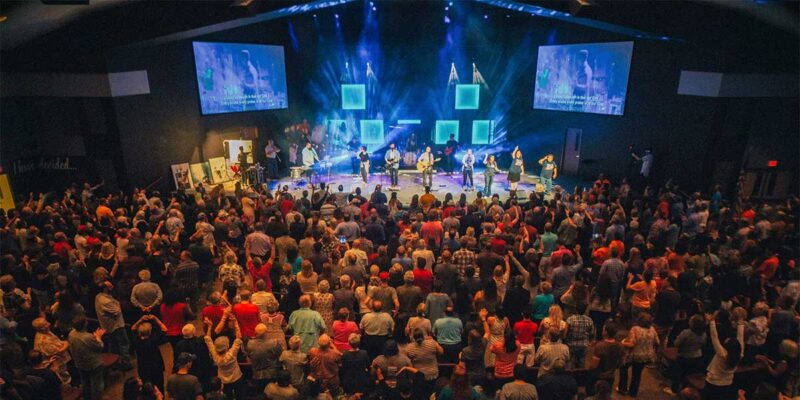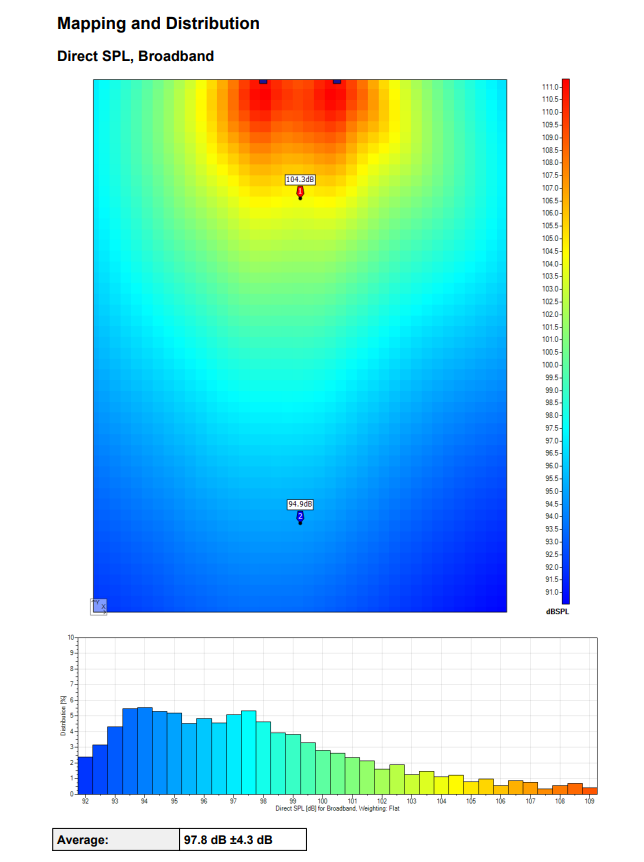The Rise of Business Intelligence for AVL in Churches
 Churches deal in large inventories of complex Audio, Video and Lighting (AVL) technology across multiple venues and increasingly across multiple campuses. The advent of the church technical director in the 1970s has become a standard role in even medium-sized churches where the ubiquitous presence of AVL is the norm, not the exception. What these churches continue to need is a way to identify the return on technology — the intangible value at the intersection of ease of use and seamless experiences — that translates indirectly back into the quality of the service or event via the rise of business intelligence for AVL in churches.
Churches deal in large inventories of complex Audio, Video and Lighting (AVL) technology across multiple venues and increasingly across multiple campuses. The advent of the church technical director in the 1970s has become a standard role in even medium-sized churches where the ubiquitous presence of AVL is the norm, not the exception. What these churches continue to need is a way to identify the return on technology — the intangible value at the intersection of ease of use and seamless experiences — that translates indirectly back into the quality of the service or event via the rise of business intelligence for AVL in churches.
For decades, systems integrators have sold the simplicity of combining functional operation among and between AVL gear via third-party access and control systems from AMX, Crestron, Extron and others. This was the first tiny step towards building a path towards creating a visualization system to escape the operational systems and launch beyond to the world of business intelligence.
 The Rise of Business Intelligence for AVL in Churches
The Rise of Business Intelligence for AVL in Churches
Business intelligence (BI) refers to technologies, applications and practices for the collection, integration, analysis, and presentation of business information. The basic purpose of BI is to support better business decision-making through the visualization and representation of meaningful and relevant data. But how do you represent a local church’s main value stream when they’re not selling a product or service with cause-and-effect metrics like click-through rate or e-cart abandon rates? You identify what is valuable to them and help quantify their expectations against the real-world performance of the AVL technology.
Church leaders don’t want to think about technology during services. From a technical standpoint, they want and expect a zero percent failure rate. From an operational standpoint, they expect seamless operation by staff and/or volunteers. Subjectively, they may feel that one service was ‘better’ than another based on their experiences with how well the AVL technology and/or operator performed. To address this, it is entirely possible (and I’d say a recommended best practice) to visualize a dashboard and reporting mechanism that identifies the ‘uptime’ of equipment on a service-by-service, weekend-by-weekend basis. This provides a level of confidence in the technologies that the church has invested heavily in, and it provides a running set of totals for the technical director to identify which components are nearing expected, routine maintenance and which components have experienced a failure.
More subjectively, the data might also represent the overall operation of AVL together, underscoring the significant complexities of operating the equipment by staff and volunteers. Patterns of usage, for example, may lead to the discovery that a percentage of lighting instruments are rarely used in one venue and may be better suited for another venue the church uses, making the re-purposing of equipment a better option than adding additional equipment and technical infrastructure. For the majority of churches with multiple venues, either on the same campus or at satellite/multi-site campuses, a visualization dashboard could report the overall health of each AVL system, in each venue and which technologies are in use. This provides the technical teams with instant access to their overall AVL infrastructure and allows for troubleshooting from any location as well as instant notifications to key staff of any issues. Further, it represents a holistic viewpoint for seeing utilization patterns for noting preventative maintenance and setting automation to turn off any AVL technology that is accidentally left on — think projectors burning expensive lamps, moving light fixtures and even digital signage left on during off-peak hours.
High Availability Is Important for Churches Too
The term ‘high availability’ (HA) has been around in the information technology space for decades, signifying systems that are durable and likely to operate continuously without failure or interruption. The term implies that accommodations for failure have been considered and solved in the form of redundant components. A data center in the IT world will have at least two independent power sources, full electrical back-up and independent zones that prevent one failure from cascading across the entire center. This level of expense, engineering and redundancy is justified by having HA zones for mission critical technology performance that sustain a revenue-generating business.
In the house of worship market, HA should be defined with each church at the beginning of scoping a new AVL build or retrofit. How much availability is expected? What kind of costs are involved with creating HA for a defined set of key systems such as lighting and audio? A visualization of the key infrastructure (HA) zones would make for an informative dashboard to highlight the investment and provide an overview of status and alerts to notify technical personnel in case of failures or warnings. Taken to a larger scope, churches with multiple campuses spread across a geographical area would be very interested in a heads-up dashboard that identifying the operational readiness and status of each venue.
Church technical staff need to be able to see top-level systems’ status on their mobile devices, as these operators are quite often moving between venues and not always available to physically troubleshoot a problem. While an AMX, Crestron or Extron control system could help, visualizing the BI dashboards on a mobile app provides the anywhere, anytime access that has now become as important to church techs as it is to IT data center managers. Pastors and technical directors alike would benefit from seeing what is possible when meaningful data is visualized, summarized, analyzed and presented in a helpful way.
Though this may sound like a ‘someday-in-the-future’ article, I submit that with open standards and protocols instead of the outdated proprietary control languages used by AVL manufacturers, this could be made much easier on systems integrators. The need for BI in the church world is here now. It may be harder to tie it all together into one dashboard view from a variety of control interfaces, but that shouldn’t stop the savvy systems integrators and consultants from designing these big-picture visualizations today.
When do you see visualizing operational and systems data in a business intelligence view for churches? Share your views and opinions in the comments below.





